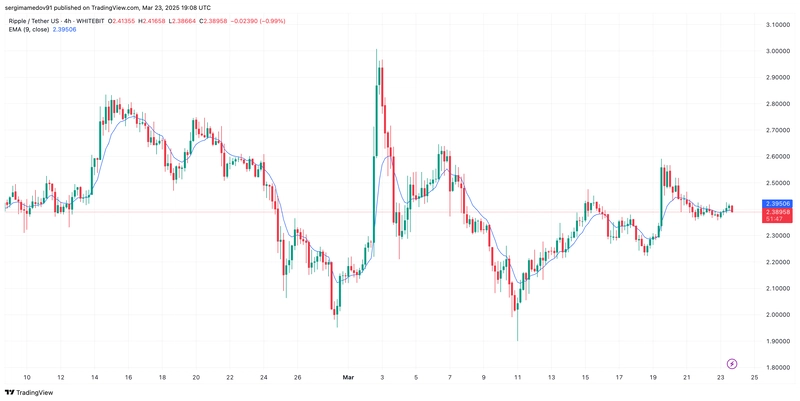What Are the Most Common Security Measures to Implement in Cakephp Projects?
When developing a web application, security is of utmost importance. CakePHP, a popular PHP framework, offers several in-built security features to help protect your applications. However, relying solely on these default measures is not sufficient. In this article, we will discuss the most common security measures to implement in CakePHP projects to safeguard them from potential vulnerabilities. 1. Use Strong Authentication Password Hashing One of the primary defenses against unauthorized access is robust password management. Ensure that passwords are hashed before storing them in the database. CakePHP provides strong password hashing mechanisms using the PasswordHasher class. Enforce HTTPS Securing data transmission between the client and server is crucial. Enforce HTTPS to encrypt data using SSL/TLS certificates. This prevents man-in-the-middle attacks and protects sensitive information. 2. Input Validation and Sanitization Proper input validation and sanitization help protect against SQL injection and cross-site scripting (XSS) attacks: Use Validation Rules: CakePHP's ORM provides built-in methods to enforce validation rules for user inputs. Sanitize Outputs: Always sanitize data before displaying it. CakePHP offers helper methods like h() to escape HTML output. 3. Protect Against CSRF Attacks Cross-Site Request Forgery (CSRF) attacks can be mitigated using CSRF tokens. CakePHP includes CSRF protection by default. Ensure you have the CSRF middleware enabled to validate requests. 4. Implement Access Control Careful management of user permissions is essential: Use Authorization Plugins: Plugins like Authentication and Authorization provide fine-grained access control. Role-Based Access Control (RBAC): Implement RBAC to manage user permissions and restrict access to sensitive operations. 5. Secure Cookies and Sessions Configuring cookies and session management settings is critical: Set HttpOnly and Secure Flags: Mark cookies as HttpOnly and Secure to prevent JavaScript access and ensure they are transmitted over HTTPS only. Use Cookie Encryption: Encrypt session data to prevent exposure of sensitive information. 6. Regularly Update Dependencies Security vulnerabilities can arise from outdated libraries and frameworks. Regularly updating CakePHP and its dependencies ensures that you have the latest security patches. Additional Resources Enhance your CakePHP application's security by exploring these topics: CakePHP Pagination SEO Best Practices SWF File Integration CakePHP SEO Optimization Populate Dropdown Top Hosting Providers for CakePHP Implementing these security measures will help protect your CakePHP projects from common vulnerabilities. Always stay informed about the latest security practices and updates in the CakePHP community to maintain a robust security posture.

When developing a web application, security is of utmost importance. CakePHP, a popular PHP framework, offers several in-built security features to help protect your applications. However, relying solely on these default measures is not sufficient. In this article, we will discuss the most common security measures to implement in CakePHP projects to safeguard them from potential vulnerabilities.
1. Use Strong Authentication
Password Hashing
One of the primary defenses against unauthorized access is robust password management. Ensure that passwords are hashed before storing them in the database. CakePHP provides strong password hashing mechanisms using the PasswordHasher class.
Enforce HTTPS
Securing data transmission between the client and server is crucial. Enforce HTTPS to encrypt data using SSL/TLS certificates. This prevents man-in-the-middle attacks and protects sensitive information.
2. Input Validation and Sanitization
Proper input validation and sanitization help protect against SQL injection and cross-site scripting (XSS) attacks:
- Use Validation Rules: CakePHP's ORM provides built-in methods to enforce validation rules for user inputs.
-
Sanitize Outputs: Always sanitize data before displaying it. CakePHP offers helper methods like
h()to escape HTML output.
3. Protect Against CSRF Attacks
Cross-Site Request Forgery (CSRF) attacks can be mitigated using CSRF tokens. CakePHP includes CSRF protection by default. Ensure you have the CSRF middleware enabled to validate requests.
4. Implement Access Control
Careful management of user permissions is essential:
- Use Authorization Plugins: Plugins like Authentication and Authorization provide fine-grained access control.
- Role-Based Access Control (RBAC): Implement RBAC to manage user permissions and restrict access to sensitive operations.
5. Secure Cookies and Sessions
Configuring cookies and session management settings is critical:
-
Set HttpOnly and Secure Flags: Mark cookies as
HttpOnlyandSecureto prevent JavaScript access and ensure they are transmitted over HTTPS only. - Use Cookie Encryption: Encrypt session data to prevent exposure of sensitive information.
6. Regularly Update Dependencies
Security vulnerabilities can arise from outdated libraries and frameworks. Regularly updating CakePHP and its dependencies ensures that you have the latest security patches.
Additional Resources
Enhance your CakePHP application's security by exploring these topics:
- CakePHP Pagination SEO Best Practices
- SWF File Integration
- CakePHP SEO Optimization
- Populate Dropdown
- Top Hosting Providers for CakePHP
Implementing these security measures will help protect your CakePHP projects from common vulnerabilities. Always stay informed about the latest security practices and updates in the CakePHP community to maintain a robust security posture.











































































































































































![[The AI Show Episode 142]: ChatGPT’s New Image Generator, Studio Ghibli Craze and Backlash, Gemini 2.5, OpenAI Academy, 4o Updates, Vibe Marketing & xAI Acquires X](https://www.marketingaiinstitute.com/hubfs/ep%20142%20cover.png)




























































































































![[DEALS] The Premium Learn to Code Certification Bundle (97% off) & Other Deals Up To 98% Off – Offers End Soon!](https://www.javacodegeeks.com/wp-content/uploads/2012/12/jcg-logo.jpg)


![From drop-out to software architect with Jason Lengstorf [Podcast #167]](https://cdn.hashnode.com/res/hashnode/image/upload/v1743796461357/f3d19cd7-e6f5-4d7c-8bfc-eb974bc8da68.png?#)








































































































.png?#)























.webp?#)










_Christophe_Coat_Alamy.jpg?#)
 (1).webp?#)




































































































![Apple Considers Delaying Smart Home Hub Until 2026 [Gurman]](https://www.iclarified.com/images/news/96946/96946/96946-640.jpg)
![iPhone 17 Pro Won't Feature Two-Toned Back [Gurman]](https://www.iclarified.com/images/news/96944/96944/96944-640.jpg)
![Tariffs Threaten Apple's $999 iPhone Price Point in the U.S. [Gurman]](https://www.iclarified.com/images/news/96943/96943/96943-640.jpg)



































































































































